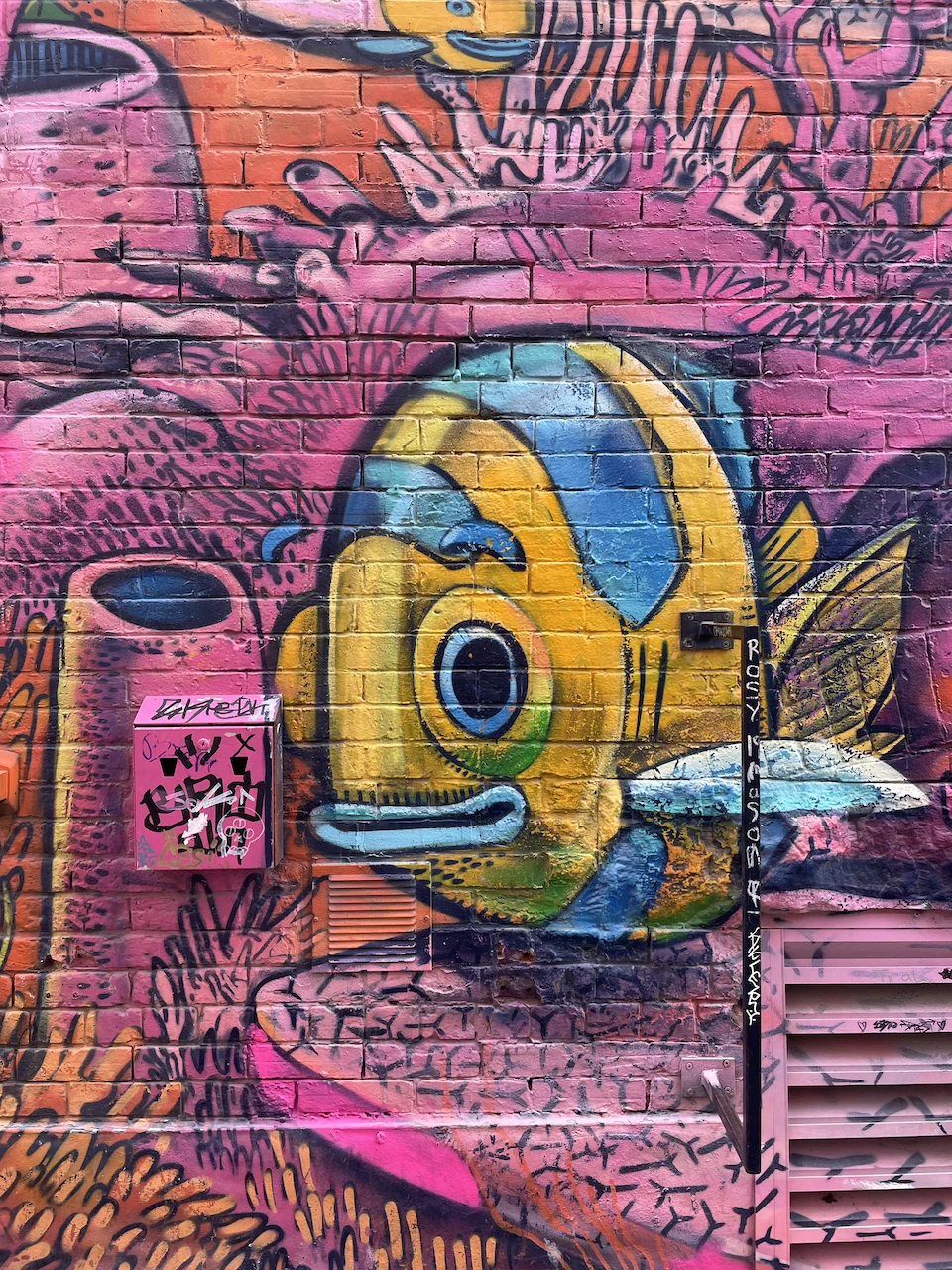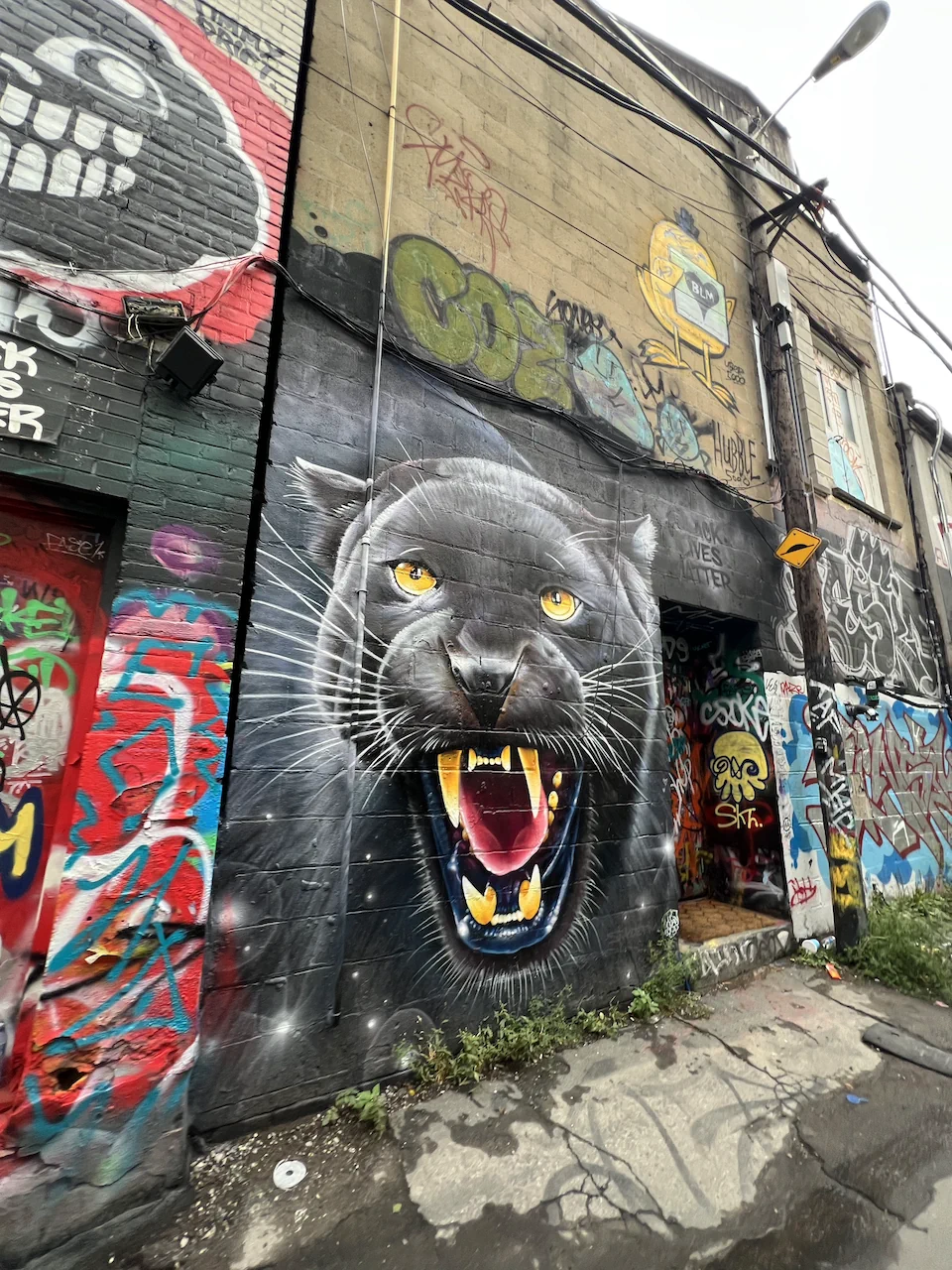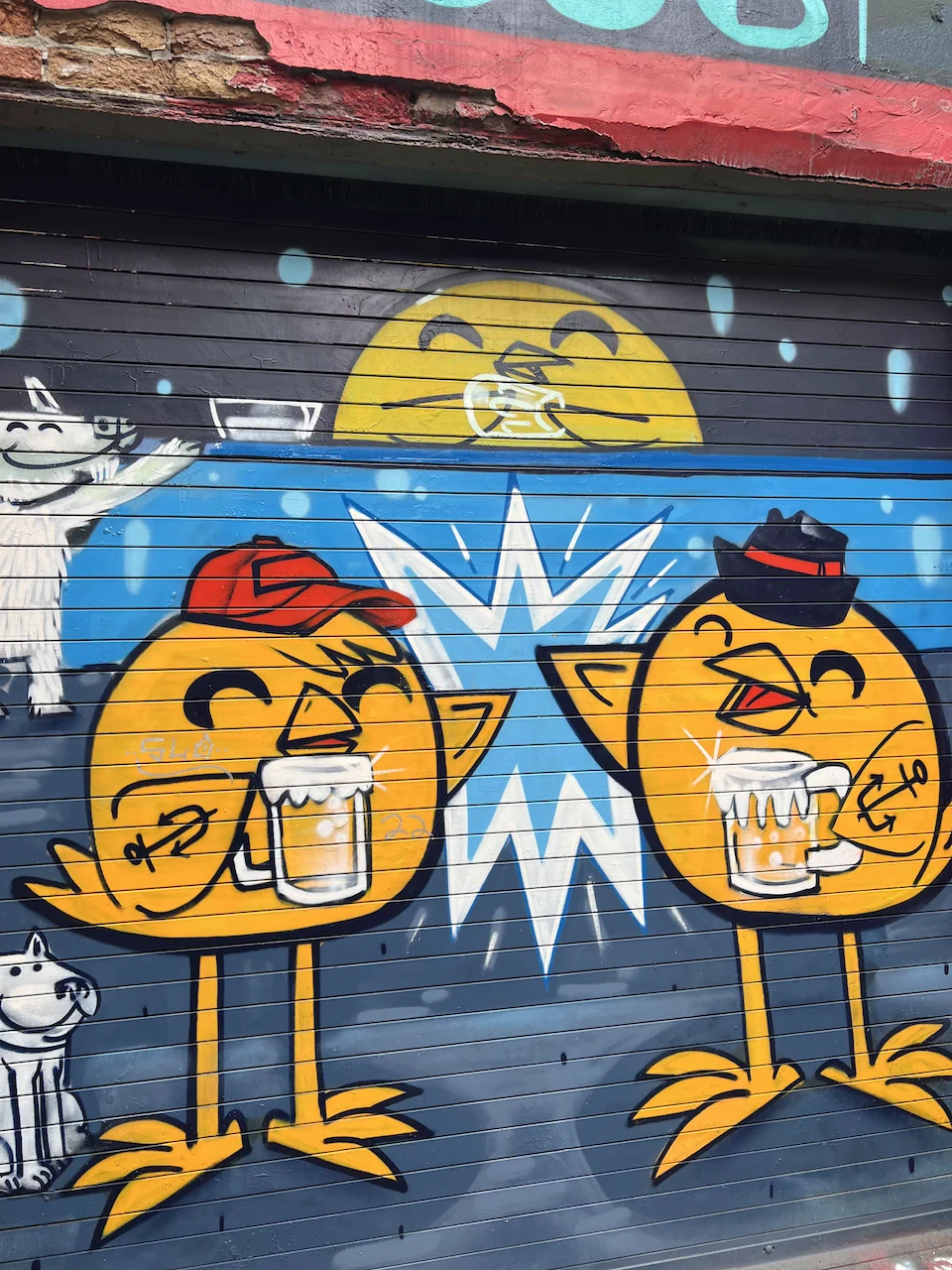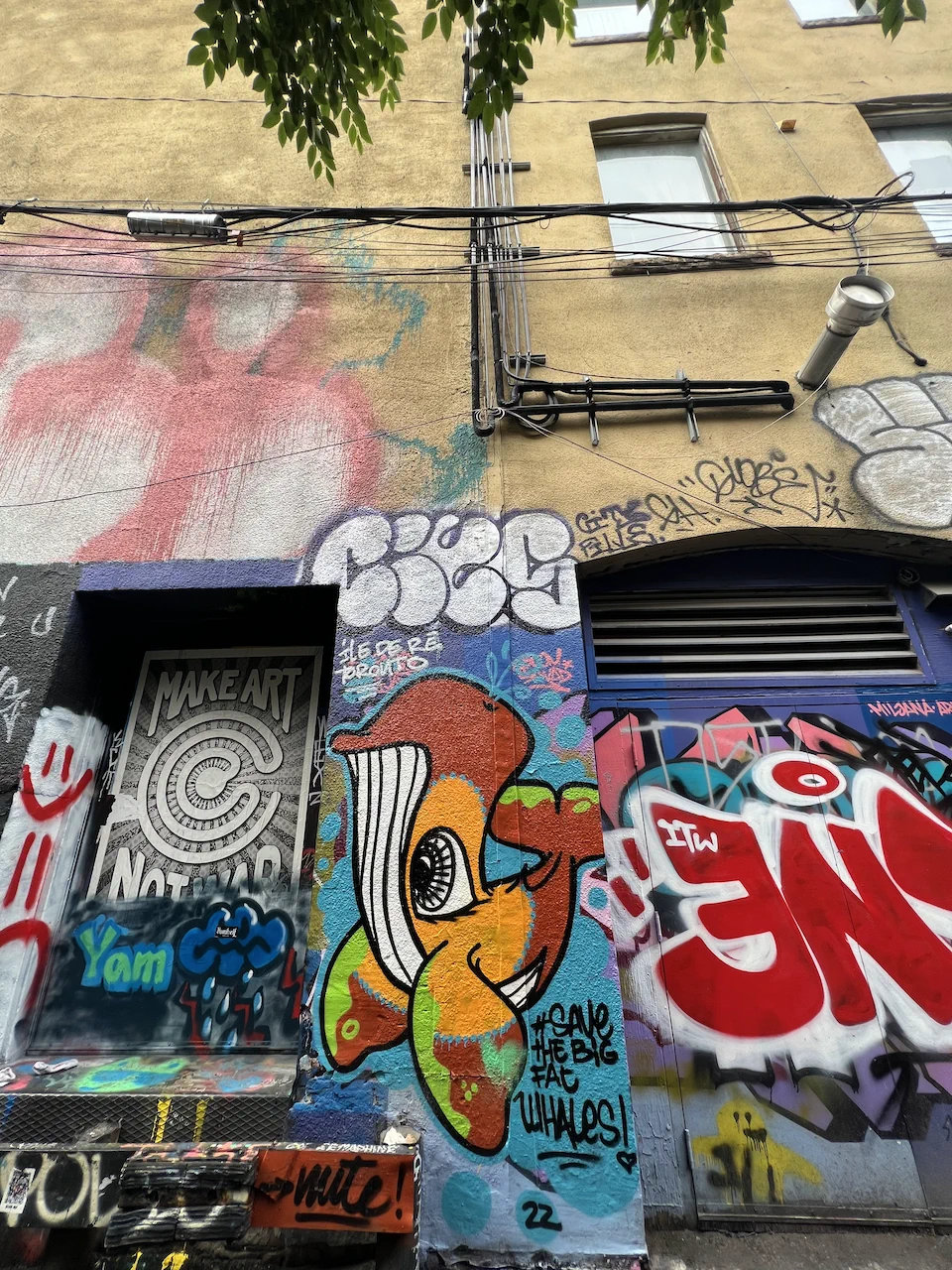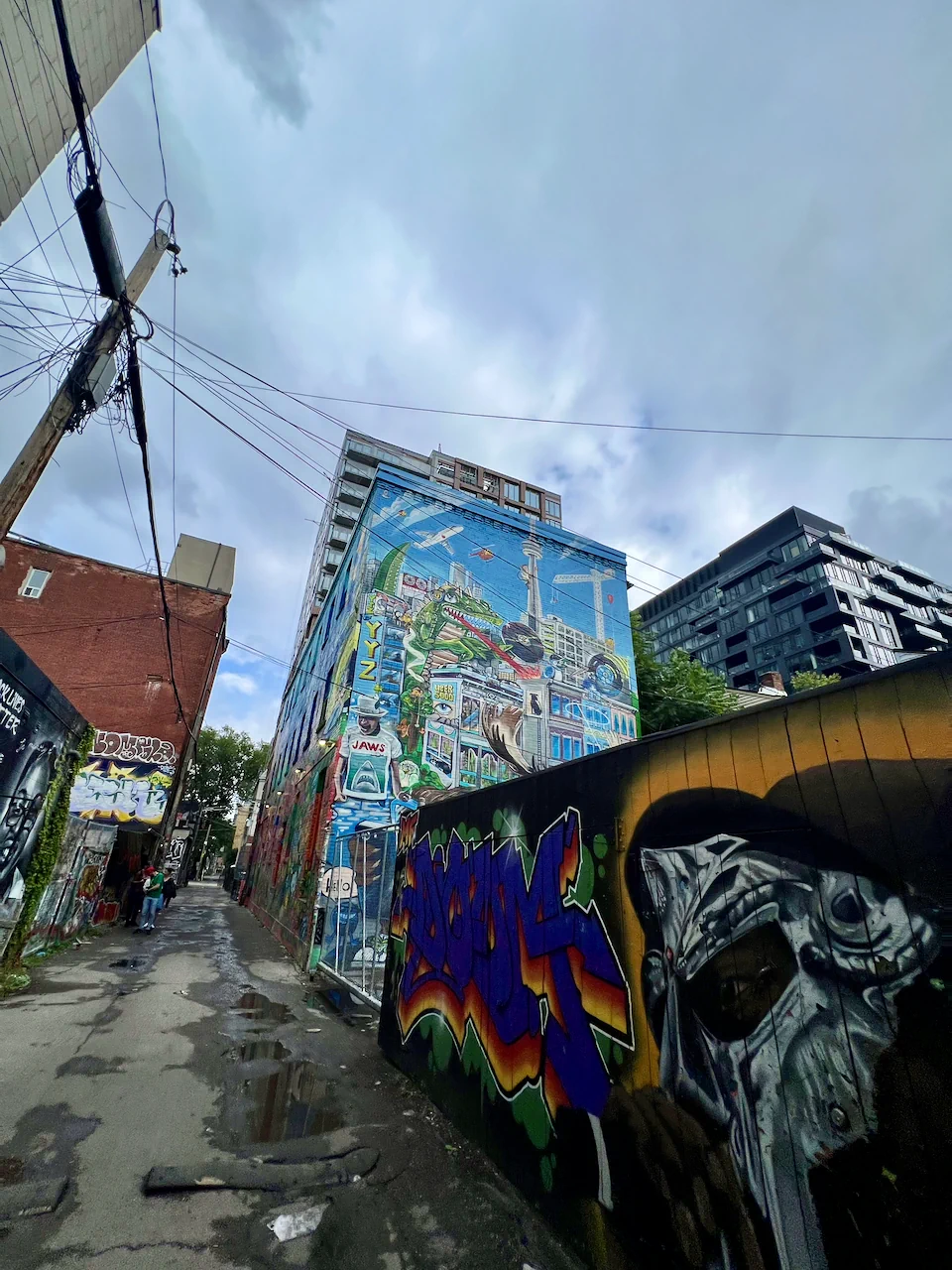Here’s a quick rundown of our top five outdoor spots to explore in and around Toronto.
High Park
Toronto’s largest public park features ample green space, lakes, tributaries, peaks, and spectacular views. It’s nestled on the outskirts of downtown Toronto and is a must-visit if you’re in the area. The air is fresh and clean, likely due to the preservation of native plants. Over ⅓ of the park is designated as an environmentally significant area, meaning the city has preserved it in its original natural state.
We took Niko on quite a few walks in sprawling High Park on the weekends.

And the weekend is the best time to visit when all roads inside the park are closed to motor vehicles — so it’s filled with families, bicyclists, skateboarders, and friendly doggos. There’s nary a whiff of gas-guzzling SUVs or the clanging of car doors slamming shut. You can’t even hear the traffic outside the park because it’s so thick with vegetation. It was easy to forget that we were only ever a few minutes from bustling city streets.
Beyond the naturally preserved areas of the park (which feature hiking trails and ample wildlife), you’ll find outdoor botanical gardens, cafés, a zoo, and plenty of picnicking spots.
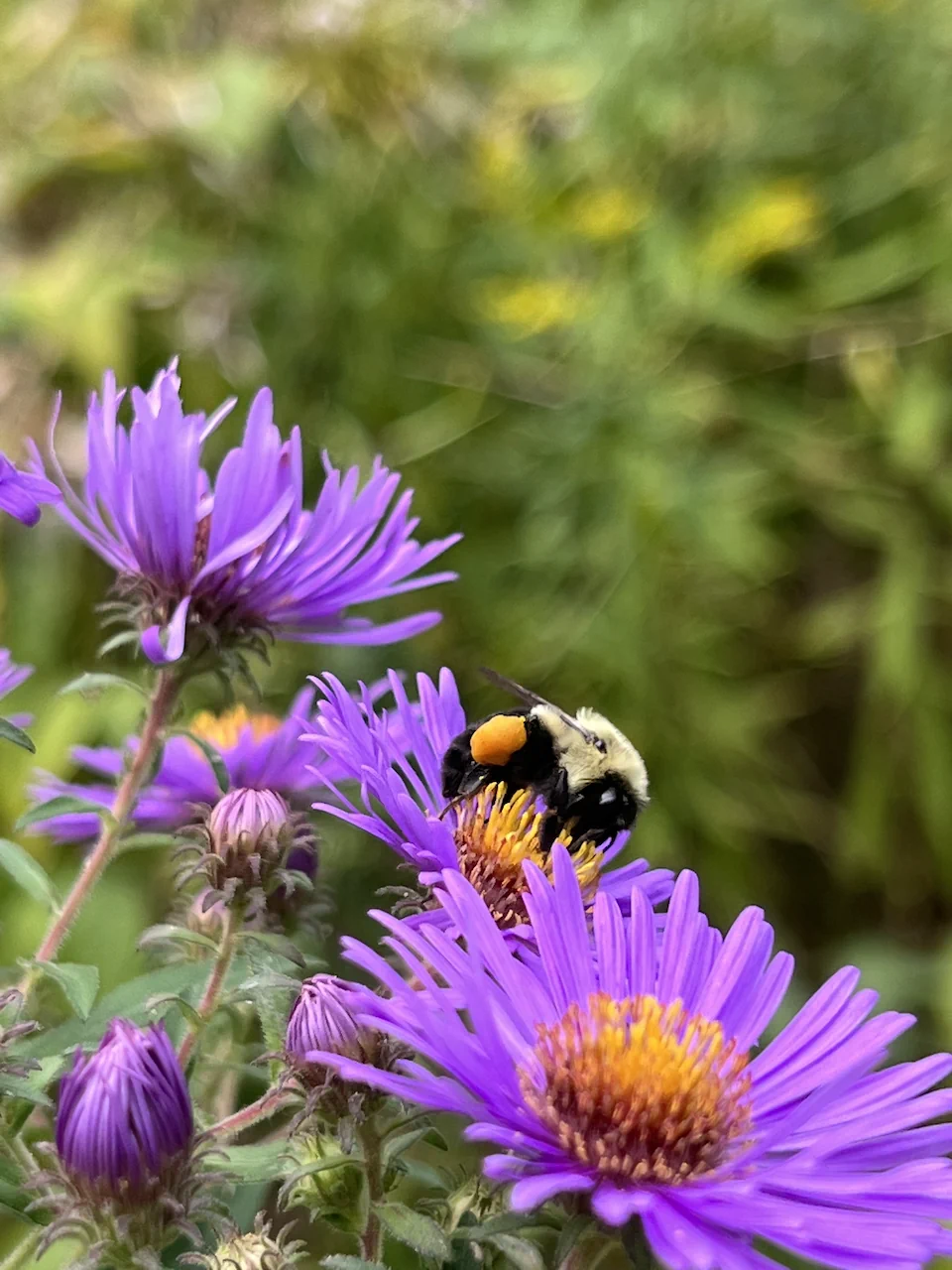
Toronto Islands
There are islands off the coast of Toronto! Yes, islands! For the price of a cup of coffee, you can hop on a public ferry from downtown Toronto out to the serene Toronto Islands. The return ferry is free; the last one leaves just before midnight.
We started our adventure at Ward’s Island and made our way west across the archipelago through Center Island to Hanlan’s Point. Ward’s is a relatively quiet area with relaxed hiking and biking paths meandering through the woods. We found several “hidden” trails that opened up to beautiful views of the Toronto skyline on the north side, secluded areas of Ward’s Island Beach on the southern end, and some cute little cafés in between.
The locals on Ward’s Island had set up an art walk while we were there. As we followed along the trails, we’d come across a wood-frame house with paintings or sculptures on display. It turns out that there’s a close-knit community of locals that live on the Islands. Ward’s and Algonquin Islands are home to just shy of 700 people. And notably, no cars (save for a school bus and some service vehicles) are allowed on the Islands. I thought it might be nice to rent a place out here sometime. However, buying or selling property on the open market is forbidden here. Interested buyers must join a waitlist that is, by some estimates, nearly 200 years long. But that seems to be part of what makes this place so unique. There aren’t any outlandish real-estate developments: just miles of kayaking, biking, and walking trails interspersed with cafés, camping spots, picnic areas, and scenic lookouts.
Things got a little more touristy as we meandered towards Center Island. We tried our luck in a fairly large hedge maze, and thankfully found our way out before too long.

There was also a small amusement park with rides and food carts, but I had the best time just walking along the beach and finding little hidden pathways or lookout points to see the city from a distance.
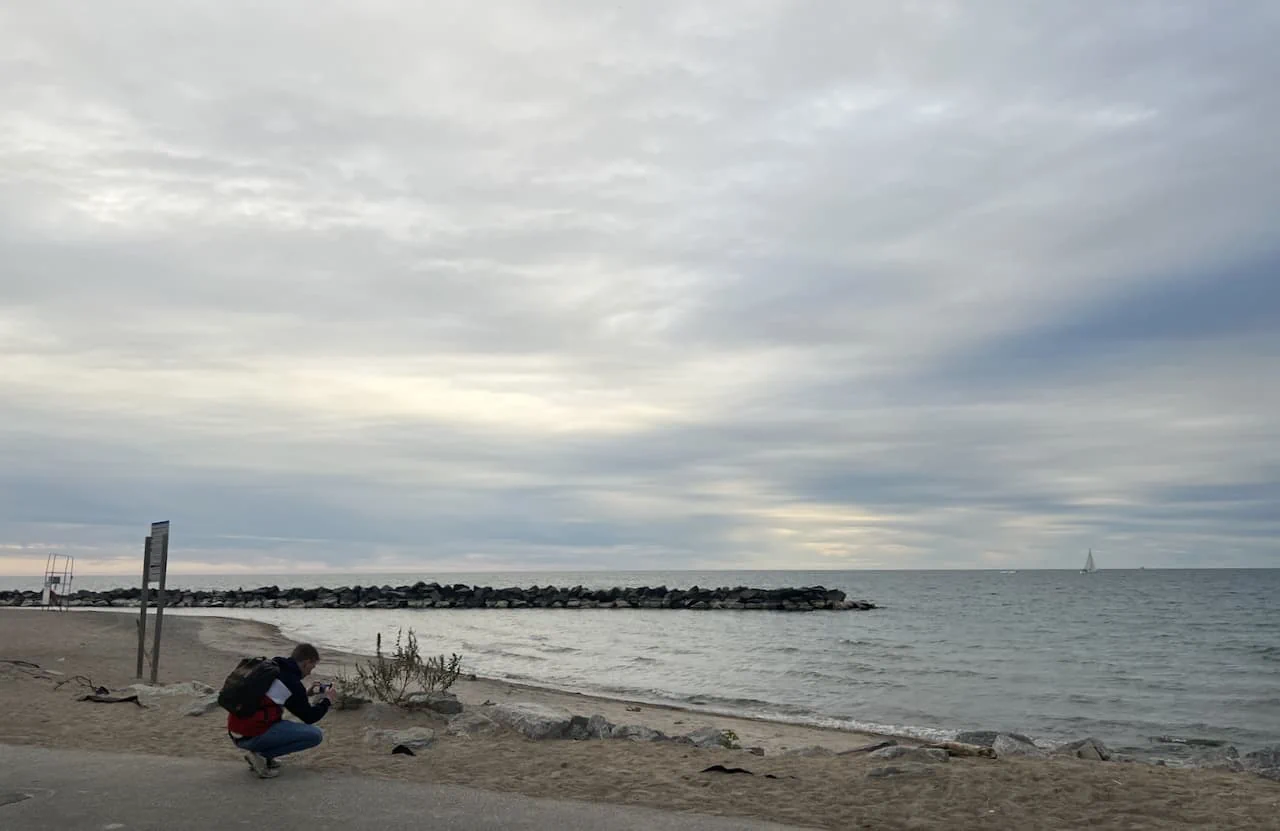
By far, the best spot to sit and look out at the skyline was Lighthouse Pond. The 1808 Gibraltar Point Lighthouse, whose first keeper mysteriously disappeared, looms spookily over the pond. Behind the lighthouse was an unmarked path that brought Sam and me to a secluded lookout area where we could see the entire Toronto skyline. BEAUTIFUL! Even on a cloudy day, this was an incredible sight.
Niagara Falls
Of course! What outdoorsy article about Toronto would be complete without a mention of Niagara Falls?
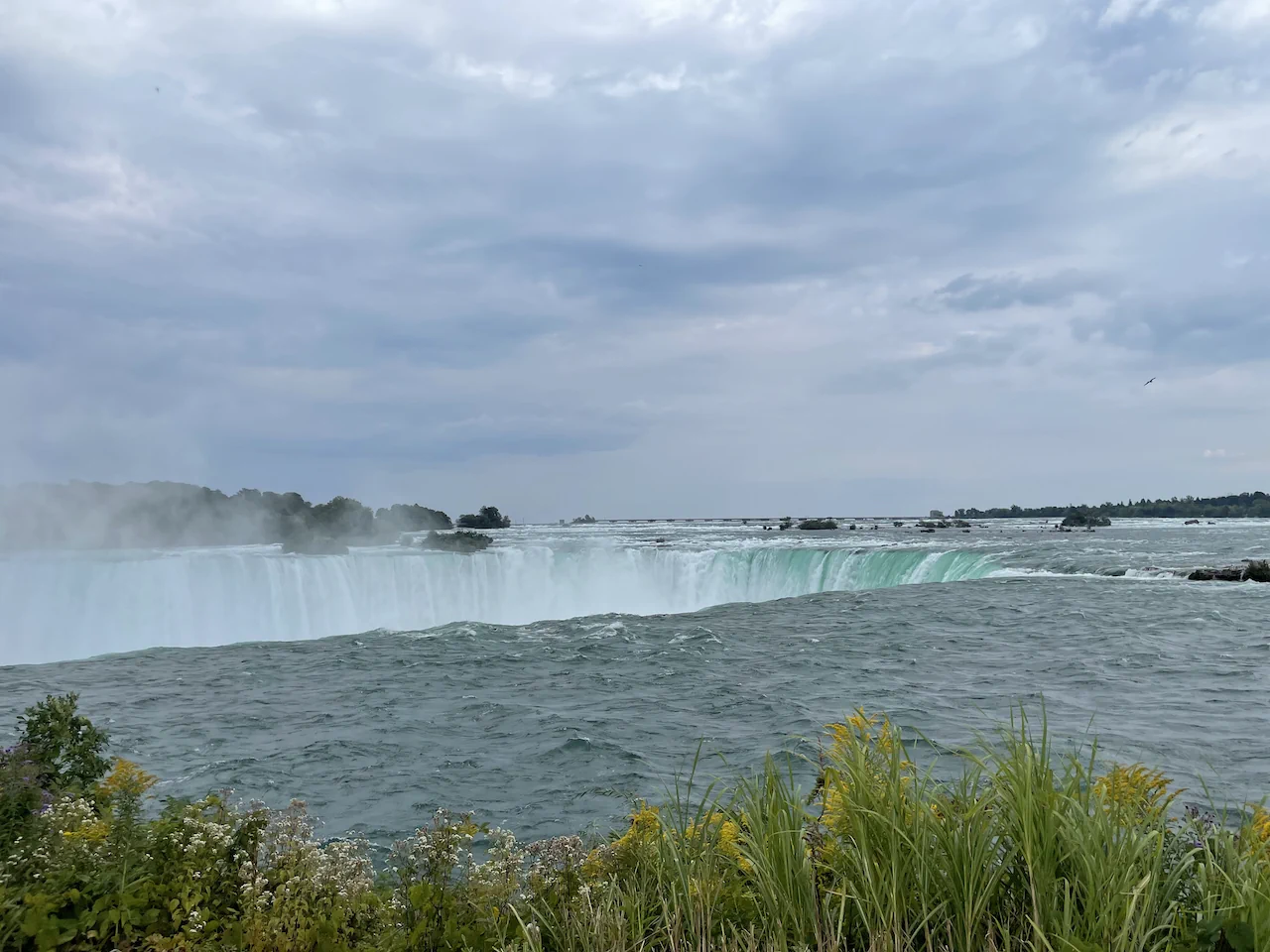
On a rainy Saturday morning, Sam and I took a semi-short drive to Niagara Falls (about an hour, so nothing for us). We knew there’d be a lot of tourists, children, and excited dogs at such a massive Earth-made attraction, so we left baby Niko at our condo; too much stimulation for a dog with anxiety.
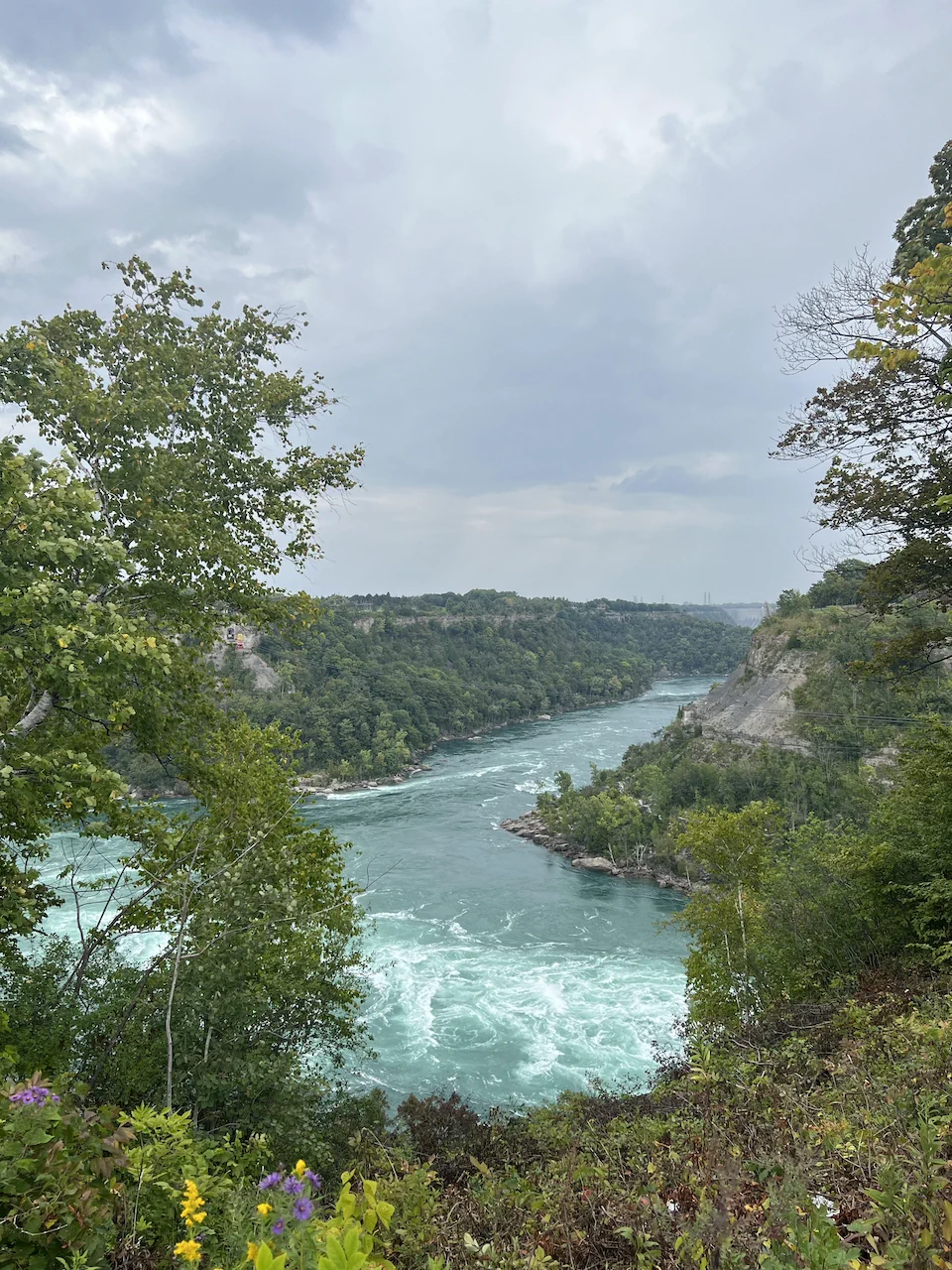
Niagara Falls was breathtaking, and the observable wildlife around the falls was even more captivating. Watching the birds perching on rocks or swimming along the edge of the treacherous waterfall was mesmerizing, and had both Sam and me in awe. Seeing a bunch of squirrels and a few chipmunks living in the shrubbery along the perimeter of the falls had us both smiling and laughing. These animals probably think the tourists just come here to see them. Although most people don’t, I think we gave the animals the spotlight they deserve.

Toronto Music Garden
Downtown Toronto has nice boardwalk-type walking paths with gardens, busking musicians, and the beautiful scenery of Lake Ontario. The Toronto Music Garden was lovely to walk through and enjoy all the various sights and sounds near the water. Many locals bring their families here to picnic, there are people running or jogging for exercise, and others like Sam and me enjoy the ample space. It’s very much downtown and close to several restaurants and shopping areas.
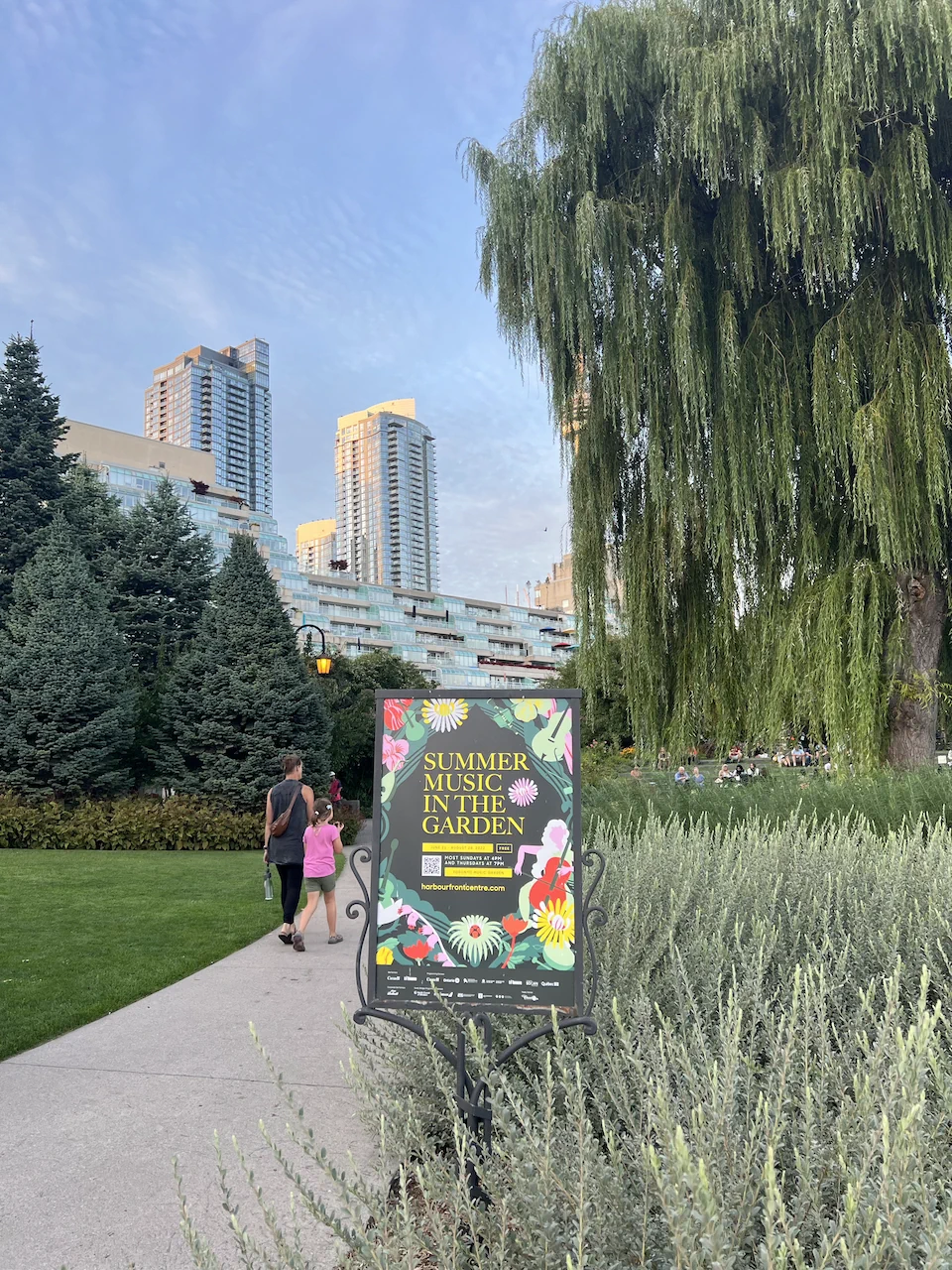
Several ports with boat taxis near the Toronto Music Garden can transport people to and from the Toronto Islands. The park is one of the city’s “most enchanted locations,” and although that seems like an exaggeration the park is beautifully put together. The inspiration for the Garden’s design comes from Bach’s First Suite for Unaccompanied Cello. Apparently, each dance movement within the suite corresponds to a different section of the garden.
Graffiti Alley
Located in the heart of Toronto’s Fashion District is Graffiti Alley. This was such a bright part of our day, to walk and see all the art from so many different types of artists. Very beautiful, surreal, and hidden in the city. I’ll let the rest of the pictures speak for Graffiti Alley.
